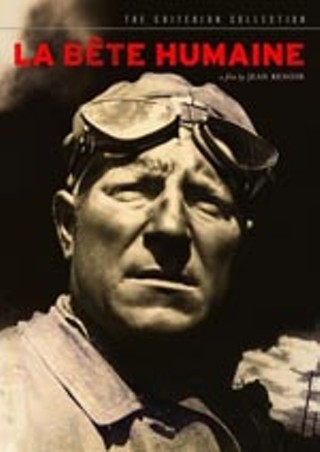La Bête Humaine
Jean Renoir shot it in 1938, just as Hitler's troops were occupying the Sudetenland and Neville Chamberlain and his band of appeasers were bending Europe's back to the whims of the Third Reich. So, you'll forgive him for making such a dark picture.
Reviewed by Josh Rosenblatt, Fri., Feb. 17, 2006

La Bête Humaine
Criterion, $29.95
French master Jean Renoir shot La Bête Humaine in 1938, just as Hitler's troops were occupying the Sudetenland and Neville Chamberlain and his band of appeasers were bending Europe's back to the whims of the Third Reich. So, you'll forgive him for making such a dark picture: Not even a great humanist was immune to the rising tide of cynicism threatening to drown Europe back in those days.
La Bête Humaine stars Renoir favorite Jean Gabin as luckless train conductor Jacques Lantier, who falls in love with a murderer's wife (the impossibly beautiful Simone Simon) and is tormented by violent fevers of the brain. The source of these spells is a mystery; for the sake of the story, it's enough to know that they come around from time to time, and when they do, it's best not to be in the room. Early in the picture, they inspire Lantier to choke his girlfriend half to death in a field of high grass, after which he apologizes by blaming the murderous fog that descends on occasion to addle his brain and transform him into the titular beast. "This haze fills my head and twists everything out of shape," he says to the poor girl. "I start feeling like a mad dog."
Fair warning, and yet she tarries. Such is love.
Filmed in deep, rich (and here, digitally restored) blacks and whites and populated by tortured characters with dark pasts lurking in shadows, La Bête Humaine helped set the table for the far more depraved American film-noir movement that took over post-war Hollywood in the Forties and Fifties. And Gabin and Simon make a perfect pair of doomed noir lovers: he the troubled soul terrified of his own demons, she the victimized femme fatale resigned to whatever inevitable tragedy awaits her.
As with all Criterion releases, there's a generosity of added features here, including interviews, essays, and storyboards. Most fascinating, though – perhaps more fascinating than the film itself – is a clip from a 1950s French television program featuring Simon and Renoir himself, in which the aging director leads the viewers through his direction of the climactic scene from the film. Renoir gently tilts Simon's head this way and that – her intonation this way and that – and guides his star through the emotional thicket of his script. Ten minutes in the master's able hand, and Simon, some 20 years after the end of principal photography, is once again the young and tragic Séverine.
This clip is no small revelation. How often do we get to see a true artist at work, disclosing his secrets? And on television, no less. It's like watching Claude Monet reveal the subtleties of blending colors or listening to James Joyce pontificate on the virtues of this verb versus that. It's like watching Groucho Marx paint on his moustache.
Also Out Now
Metropolitan (Criterion, $39.95): Oh, to be young and rich in Manhattan, now that spring is here.
Upcoming
Controversial Classics, Vol. 2: The Power of Media (Warner Home Video, $59.98): Two discs' worth of classic gritty pictures from the likes of Sidney Lumet and Alan J. Pakula. Proof in box-set form that All the President's Men is as good as Network and Dog Day Afternoon combined.










